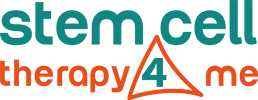Library - Muscle tendon injury - tendinitis
Bone. 2006 Oct;39(4):678-83. Epub 2006 Jun 12.
Mesenchymal stem cells for bone, cartilage, tendon and skeletal muscle repair.
Krampera M1, Pizzolo G, Aprili G, Franchini M.
1Department of Clinical and Experimental Medicine, Section of Haematology, University of Verona, Italy.
Abstract
Literature data concerning the biology and differentiation potential of mesenchymal stem cells (MSCs) have become huge in less than 10 years, although some of these data still remain contradictory. MSCs seem to be a very promising tool for cell therapy because of their peculiar characteristics, which mimic partially those of embryonic stem cells, but with some advantages in terms of availability, expandability, transplantability, and ethical implications. We discuss here the potential use of MSCs in degenerative or inflammatory diseases involving bone, cartilage, tendon and muscle tissues, on the basis of the experimental evidence.
Keywords: Mesenchymal stem cells, Regenerative medicine, Tissue repair
Cell Transplant. 2013;22(3):413-22. doi: 10.3727/096368912X656090. Epub 2012 Sep 21.
Isolation of mesenchymal stem cells from shoulder rotator cuff: a potential source for muscle and tendonrepair.
Tsai CC1, Huang TF, Ma HL, Chiang ER, Hung SC.
1Institute of Clinical Medicine, National Yang-Ming University, Taipei, Taiwan.
Abstract
The self-healing potential of each tissue belongs to endogenous stem cells residing in the tissue; however, there are currently no reports mentioned for the isolation of human rotator cuff-derived mesenchymal stem cells (RC-MSCs) since. To isolate RC-MSCs, minced rotator cuff samples were first digested with enzymes and the single cell suspensions were seeded in plastic culture dishes. Twenty-four hours later, nonadherent cells were removed and the adherent cells were further cultured. The RC-MSCs had fibroblast-like morphology and were positive for the putative surface markers of MSCs, such as CD44, CD73, CD90, CD105, and CD166, and negative for the putative markers of hematopoieticcells, such as CD34, CD45, and CD133. Similar to BM-MSCs, RC-MSCs were demonstrated to have the potential to undergo osteogenic, adipogenic, and chondrogenic differentiation. Upon induction in the defined media, RC-MSCs also expressed lineage-specific genes, such as Runx 2 and osteocalcin in osteogenic induction, PPAR-γ and LPL in adipogenic differentiation, and aggrecan and Col2a1 in chondrogenic differentiation. The multipotent feature of RC-MSCs in the myogenic injury model was further strengthened by the increase in myogenic potential both in vitro and in vivo when compared with BM-MSCs. These results demonstrate the successful isolation of MSCs from human rotator cuffs and encourage the application of RC-MSCs in myogenic regeneration.
Regen Med. 2013 Sep;8(5):613-30. doi: 10.2217/rme.13.55.
Repairing damaged tendon and muscle: are mesenchymal stem cells and scaffolds the answer?
Davies BM1, Morrey ME, Mouthuy PA, Baboldashti NZ, Hakimi O, Snelling S, Price A, Carr A.
Author information
1Nuffield Department of Orthopaedics, Rheumatology & Musculoskeletal Sciences, University of Oxford OX3 7HE, UK.
Abstract
Mesenchymal stem cells (MSCs) have become an area of intense interest in the treatment of musculoskeletal conditions, such as muscle andtendon injury, as various animal and human trials have demonstrated that implantation with MSCs leads to improved healing and function. However, these trials have usually been relatively small scale and lacking in adequate controls. Additionally, the optimum source of these cells has yet to be determined, partly due to a lack of understanding as to how MSCs produce their beneficial effects when implanted. Scaffolds have been shown to improve tissue-engineering repairs but require further work to optimize their interactions with both native tissue and implanted MSCs. Robust, well-controlled trials are therefore required to determine the usefulness of MSCs in musculoskeletal tissue repair.
Keywords: mesenchymal stem cell; muscle repair; scaffold; stem cell; tendon repair




